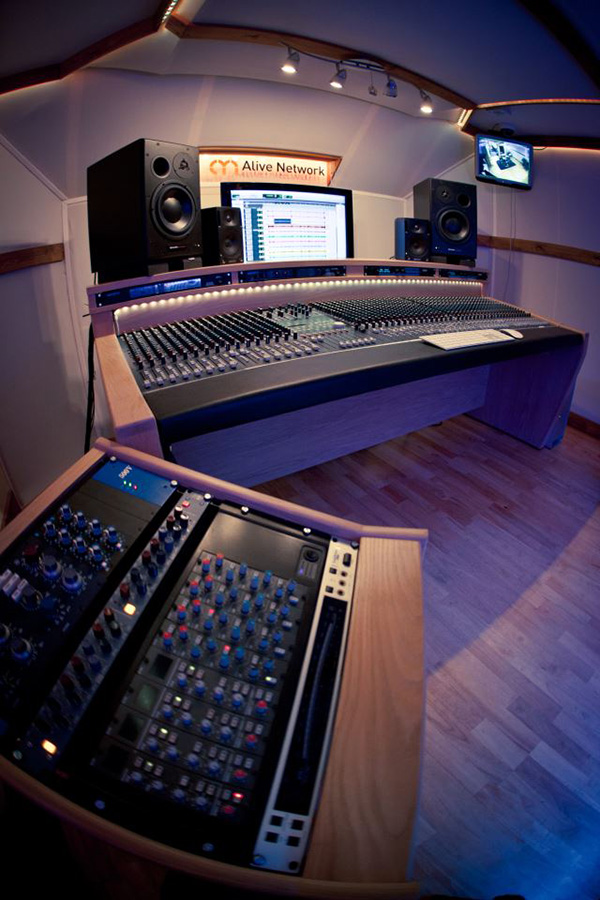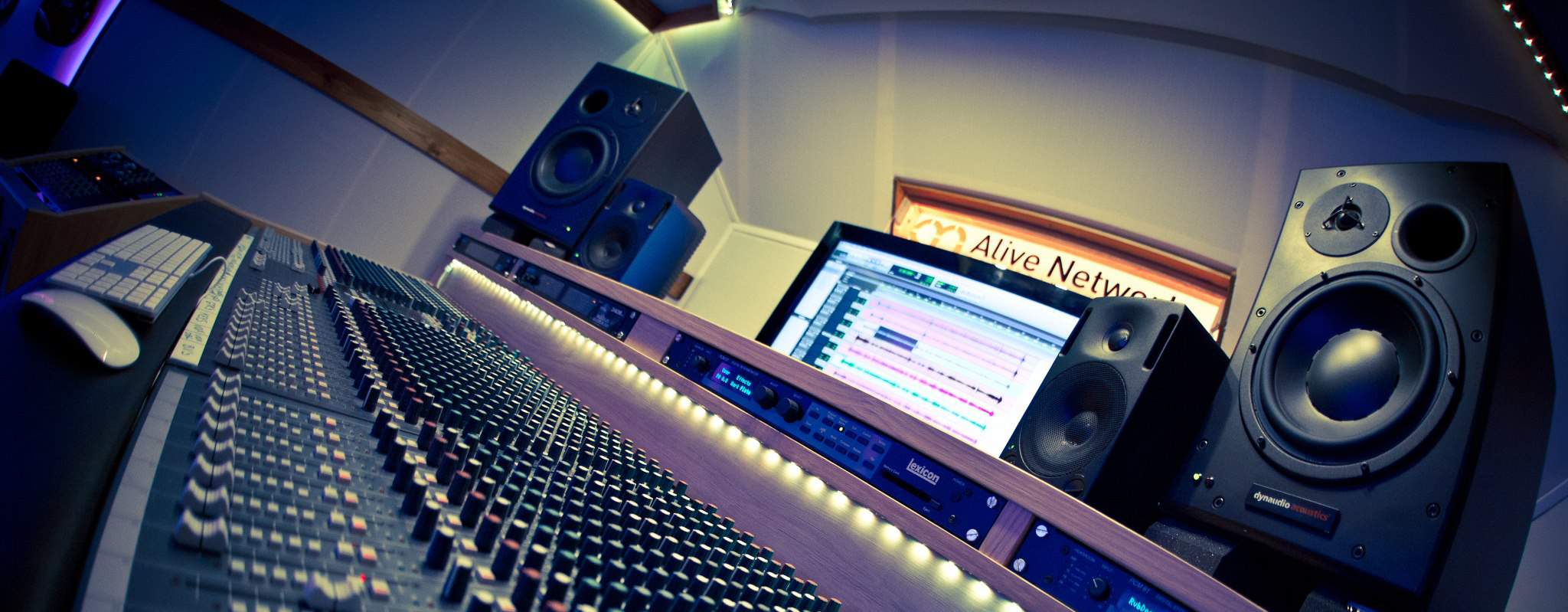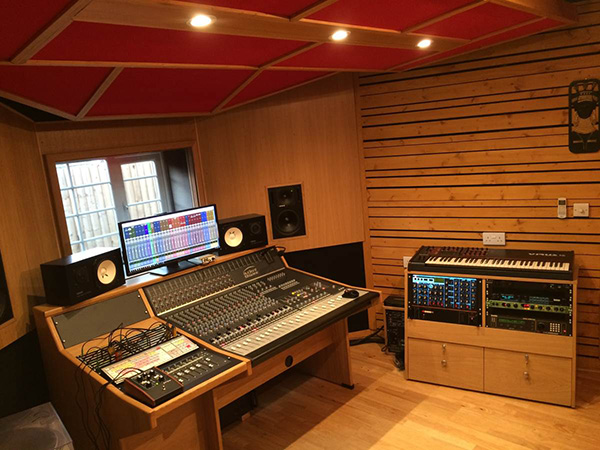At the start of the vast majority of producers’ journeys, their studio setup is likely a collection of cobbled-together bits of ‘regular’ furniture. It could be on top of a table, or a standard office desk. We’ve seen people with studio setups underneath staircases, in broom cupboards and even kitchen tables. Nothing wrong with this; we make do with what we have. Wouldn’t it be nice, however, to have a dedicated space in which to work?
Fundamentally, any flat surface which is large enough can operate as a studio, but opting for a specialist studio desk can have a huge impact on your creativity, your workflow and your overall sense of pride in your setup. In this article, we’ll offer up hints and recommendations on what to look for when you’re sourcing a studio desk. Let’s begin.

Main considerations
If up to now, you’ve been relying on a regular desk or table for your studio, you’ll probably have an idea on the limitations. Space is always an issue, particularly when a typical studio may consist of monitor speakers, screens, keyboards and other music-making gear. Elevation can be a problem too; monitor speakers, in particular, don’t always put their best feet forward when they’re flush on a desk.
There are also more health-based limitations to consider. As with any desk, the chances are you’ll spend a lot of time in a chair, stationary, in front of it. Taking steps to minimise the risks of injuries associated with bad posture is vital, and you can do this in a number of ways, which we’ll come to shortly.
How big?
Ask any studio owner and they’ll tell you the same thing; you can never have too much space. It’s fair to say we all like music equipment, right? And, as our passion and skill-level grows, so too does the desire to obtain all manner of exciting, creatively inspiring music-making gear. The problem comes in finding somewhere to physically put your new toys. It’s, for this reason, we’d always advocate buying the largest desk your space will allow. A bigger desk not only means you have more space for equipment, but it also means less compromise.
Of course, it’s easy to say but isn’t always possible. You may be limited in the space you have available to you, in which case you have to think a bit more creatively…
Modern 19-inch racks are built more with studio use in mind, combining pleasing visual aesthetics with studio-specific tricks to ensure they’re fit for purpose. They provide a safe, sturdy and practical space to hold multiple units, so everything you need is within arms’ reach at any given time.

A place for everything
One of the major benefits of buying a specialist music studio desk is that it will have been designed and built by people who understand the requirements of a typical studio user. This will be evident in a number of ways, not least through the inclusion of space to integrate outboard rack gear, or in having an elevated space for your monitor speakers to sit so they’re level with your ears. Finding permanent places for as much gear as you can, certainly the more static items, takes away a whole heap of hassle further down the line.
A 19” studio setup will take each of the individual components of the all-in-one audio interface and break them down. So, in a basic 19” rack equivalent, you would probably employ separate solutions for microphone preamps, guitar/line inputs, monitoring, headphones and effects. Then, for both safety and practicality reasons, you’ll likely require a power conditioner unit to ensure each unit is getting the juice it needs to operate properly.
The good news is that, while one of the major benefits of using rack gear is the sheer variety on offer from those component parts, you can always rely on them fitting within a standard rack.
It helps – before you start splashing out on expensive rack equipment – to have a clear idea before you start how much space these units will require. Work backwards at this point, choosing your rack units and then sourcing the rack itself once you have this information. A wise studio owner would always give themselves room to grow in the future too.
From there, you can consider options like the type of wood used to craft the rack housing and the finish you’d like. Will the unit sit on top of your desk, like our Rack Pods, or will it be integrated into the desk itself? Maybe, for larger racks or those requiring a bit of portability, the Trolley Rack would be a better option as it can be fitted with castors to allow for movement around a studio.
Layout
As important as the desk itself is how you will use it. It helps, prior to embarking on your search, to think critically about how you currently use your desk, and how you’d ideally want to in the future. Treat it as a ‘blank piece of paper’ moment, and write down everything that annoys or frustrates you about your current setup. Perhaps you have to reach too far to tweak the volume on your audio interface, or constantly have to switch items on and off your desk because you simply don’t have space.
Think also about how you may want to use your studio in the future. You might have your eyes on a specific piece of equipment, or a different workflow. Spend the time thinking the layout and organisation through at the start, so the desk can simply slip into place when you get it.
Thinking modular
Continuing the previous point; while you may not know right now how, and in which ways, you’ll want to grow your studio in the future, in our experience you almost certainly will. If space is an issue, consider how a more modular setup may work for you. You could, for example, have your main desk set up immediately in front of you, but then allow for a secondary setup off to the side.
We’ve seen great examples where multiple desks are arranged in a horseshoe layout, so the main desk is housed with the various screens, monitor speakers and controllers which get used the most, but then supplementary desks to the sides can house synths, record players or effects units. This arrangement is ideal for those of us fortunate enough to have larger collections of music gear. Plus, it looks cool and that definitely counts for something.

Comfort and efficiency
The final consideration is arguably the most important, and one we alluded to earlier. The importance of comfort. You will need to decide whether you’re putting together a studio to unlock your creative potential, that inspires you to work on your music, or whether you simply want something you can post on Instagram. Trust us, if there’s a choice, go for comfort every time. We’ve spoken to studio owners who suffer with constant back and neck ache as a result of their space not being laid out properly, to the point they can’t spend longer than an hour on their work without pain creeping in. There’s not much point having a great studio if you physically can’t use it for longer than an hour.
A word that’s used a lot in design is ergonomics. In the context of music studios, it essentially means fitting the space around the needs of the user, not the other way round. It means making sure the equipment you use the most is within easy reach. It means pairing your studio with a chair that provides the right support, and making sure you’re not forced to hunch your shoulders. It sounds basic but we’ve seen far too many examples of people favouring the flashy setup which looks great on social media but doesn’t function as efficiently as it should. Function, ergonomics and efficiency might not sound that exciting, but ignore them at your peril…
Conclusion
At a basic level, choosing a studio desk is not a difficult task. Indeed, it should be an exciting one. Get the basics right – e.g. the right size, with the right layout and organisation for your workflow – and you’ll be rewarded with a dedicated space in which you can work your magic for years to come.

